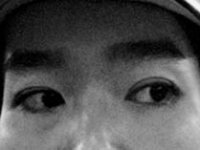Ruben..........
I must add that I find your personal attack — "who do you think you are" — uncalled for and inappopriate. All I wrote is that I find this discussion silly, which was not a personal attack on you.
—Mitch/Paris
Bangkok Hysteria© Book Project
Dear malland,
You asked for my "who do...." upon calling this thread sillier than usual, for the second time. By specifying that the target was not me personally, you are implying that it is targeted to RFF, and not improving the situation either.
I am chatting with you now as I not only read your last post but feel the between the lines feeling, which is humble and brings your honour back. There is nothing on Earth or sky that cannot be criticised, including me, who from time to time have found my own behaviour unpropper. You can criticise RFF too, of course, which like me is far from perfect.
But when I am treated with disdain instead of criticism, either by Mr Kovacks, Mr Springer, or be it the next generalisimo, some fuze in my head comes to short circuit, because deep inside I consider all people basically equal, despite status or talent. And for my further "disgrace" I had the opportunity to be besides some true elevated minds, whose gap with the common people only tought them humbliness.
So when a mini or bigi talented folk forwards disdain, I happen to feel hostility.
You are truly excused if you do not want to continue discussing this thread, which is not only technical but highly emotional too. And it drags a lot of efforts for that. You are most kindly invited to return with your opinions next week or next month. As I previously said your input has been remarkable.
========
Now for those still interested in the debate, our friend malland has provided in his latest row, two highly interesting images, that underline several points in my view
You can see that his Neopan shop girl is a much more darker image than his Neopan fishes. Indeed, once you underexpose neopan, or any other film (relatively to the following wet processing) you are going to arrive to a strongly undetailed image. We all know it.
In films, exposure is always the twin soul of processing. Both must sing accordingly. Therefore, we can stay with the Neopan 1600 fishes as the true represantive of Neopan 1600 film.
But this seems not to be the case with the digital compacts at high ISO levels. Here we are going to get disintegrated images by hook or by krook, being the only sanctuary the small size display.
I said that the front line of this battle for a decent image is fought at the ISO 400 grounds. Now some people may actually like this ultragrained look, and for some color images I have discovered it is acceptable for some tastes and very suitable for others. But from my favourable and controversial taste, the problem is that while it may work for a few images it will not for most - therefore I can't prefer it over film, or over a good Dslr.
Out of convenience I may carry daily just my small compact, but it will be irresponsible to go for a special day dedicated to shooting with the small compact only, as it will not guarantee heavy shadows or dark places.
Cheers,
Ruben





